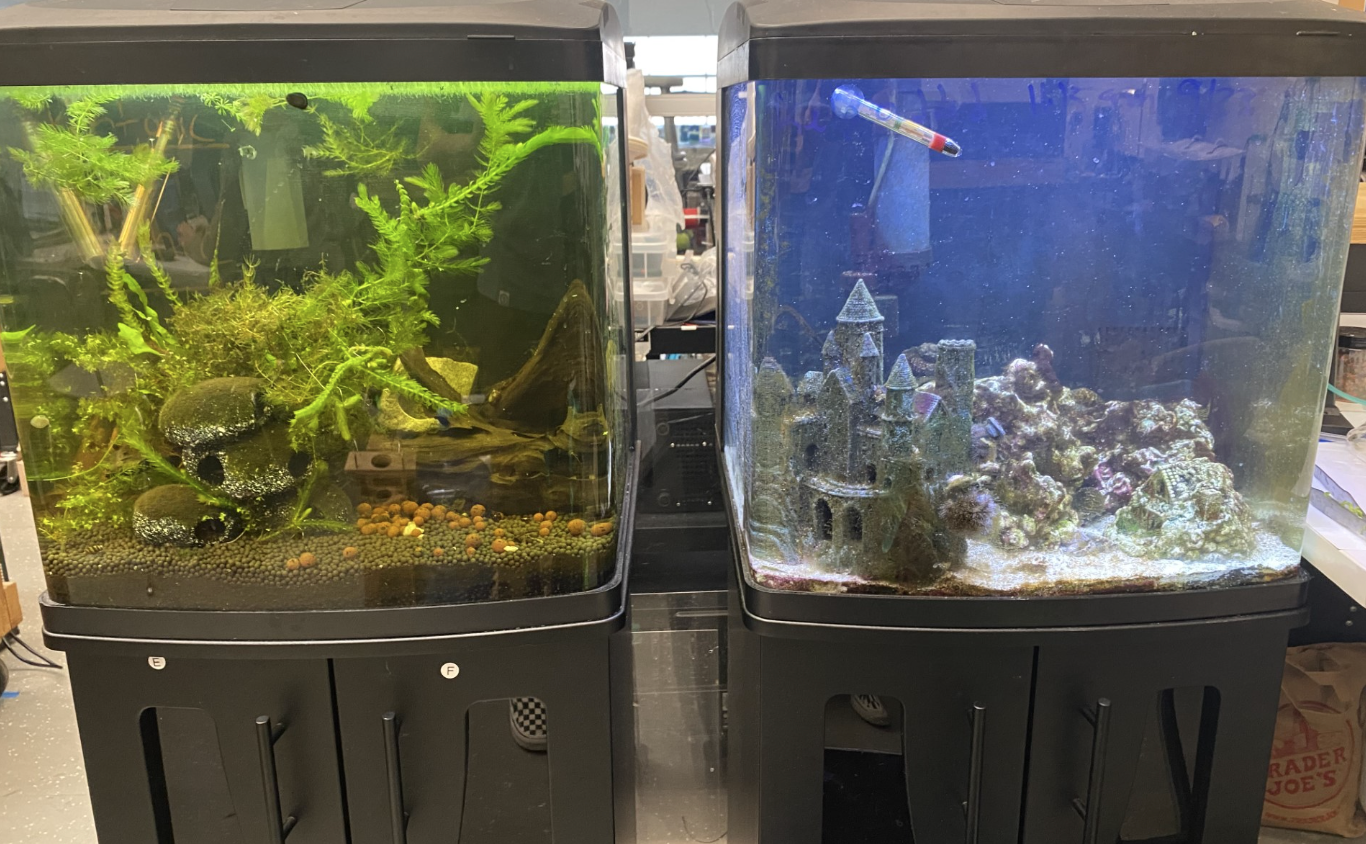
Aquatic Life
Working to simulate both freshwater and saltwater ecosystems in order to observe and study the behavior of aquatic life.
The WISRD Aquatic Life lab is divided into two branches: Fresh Water Ecosystems and Marine Biology and Ecology.
Current Freshwater Members
Current Marine Members
Journals
Fresh Water Ecosystems
-
-
October 26th, 2022: Current tank Contents: Fish: balloon molly (white, 2) plecostomus (also called algae shark, 1) platy (orange/red/mixed orange and red, 4?) glow-light tetras (mostly clear with red stripe, 4) fancy guppy (black and white spots, 2) minnow (gray with a hint of pink, 1) Plants: elodea (long ones) zafina (little ones) Other: mystery snail (many) african underwater frog (3)
October 20th, 2022: We are going to a fish store in order to purchase new fish for the tank that will add some vibrant colors and interesting inter-species dynamics.
October 6th, 2022: Added to tank: Elodea (to float in tank), 3 Frogs, 1 plecostomus, Snails (many), schooling fish (TBD species name)
September 19th, 2022: The Freshwater Tank arrived in the WISRD space. Megan and I (Max) constructed it and have since filled it with a floor of substrate. We laid seeds across this floor so that a carpet of plant life can cover the substrate which will help us maintain the nitrogen levels. Once that plant has grown, we will fill the tank with water (non-distilled water) and then we will add in the plants and animals! The main focus while we wait for plant growth is developing all of the filtration systems, both making sure we understand how they are used and having them ready to go for once the tank is set up. We also need to decide upon what will be added to the tank. Jadyn ( jadynb@wisrd.org ) has developed a list of life and items to add to the tank to support a relatively self enclosed ecosystem. Her research is as follows:
Tanks require lots of plants and some inanimate objects as well to help keep the tank clean. Rocks: (Black Mountain/normal Seiryu stones – provides great filtration, good hiding spots, doesn’t alter water ph). Plants: (Red Ludwigia, Hornwort, and Anacharis: good for oxygenizing tank ; Duckweed, Anubias Nana, Dwarf Sagittaria). Fish: (Bloodfin Tetras, Neon Tetras, or Black Neon Tetra, Harlquin Rasbora – all good in schools). Other Animals: (Amano Shrimp ; Siamese Algae Eater ; Mystery Snail – so pretty, good with all fish/good temperament). Summary/Assesment: (I think we should do some tetras, Siamese Algae Eater, Mystery Snail to start. all of these spices have good temperaments and get along well. tetras a beautiful and good at self regulation. there’s also so many plants we can get so any would work well. although we should get some flouters, some that are good for oxygenation, and some larger plant that can fill out the back. alone with this I think we should include limited hard scape such as the rocks I mentioned).
Marine Biology and Ecology
-
-
October 6th, 2022: The urchins arrived two days ago on October 4th. The tank has been fully set up for them, including rocks for hiding and a protein skimmer. The urchins were acclimated in their shipping bags to the new water, then their water was drained and they were put into the tank. One urchin died in transit, and two have died since from stress. Two to three of the urchins currently seem stressed, and it seems like the rest are doing well. I performed a feeding today by warming frozen shrimp, cutting them into smaller pieces, and dropping them into the tank using our forceps. If another urchin dies between today and tomorrow, it is also a possibility to perform a dissection. Otherwise, everything is going smoothly so far.
September 22nd, 2022: The Saltwater group currently has a temporary tank set up, with sand, salt water, rocks, and proper lighting. Megan suggested buying a second tank identical to the freshwater group’s, as their tank is better suited for the experiments we want to conduct and is more conducive to the urchin’s needs. The tank we initially set up might be used as a test tank, potentially being used to test alterations to the urchin’s ecosystem before we introduce them. The urchins arrive on October 4th, so we are working on getting the tank and the necessary food set up before then.
